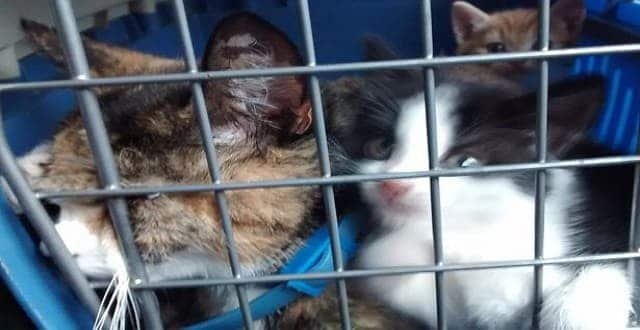STILLWATER, OKLAHOMA – An organization has been trying to control the feral cat population in Stillwater for a long time, and so far it has been a success.
On Sunday, Operation Catnip rounded up and took in about 150 feral cats to the Oklahoma State University Veterinary Teaching Hospital for its monthly spay and neuter clinic.
Macy Schneeberger, a second-year veterinary student and director of the organization, has been the main individual in charge of Operation Catnip for about a year, and she said it’s been extremely gratifying.
“I really, really enjoy it,” Schneeberger said. “I love cats, and I think we’re really benefiting the community. We’re making people happy because we’re taking care of the their animals.”
Since May 2013, the organization has had a monthly clinic. Volunteers go out in the community and trap feral cats. OSU veterinary students spay and neuter and then release the cats back into the community.
All of the students who perform surgery have completed a junior surgery course, according to the organization.
The organization also vaccinates the cats which are brought in, limiting the risk of feral cats transmitting diseases to domesticated cats, and by keeping the feral population down, it helps lower the number of cats being brought into the animal shelter, she said.
“Feral cats are always euthanized when they go into the animal shelter,” Schneeberger said. “Kittens come in from the feral cats, contributing to those numbers.”
The organization has made a sizable dent.
The prganization has spayed or neutered 2,465 cats since the organization started, according to Operation Catnip.
In 2013, Stillwater contributed to 49 percent of kitten rescue organization Tiny Paws’ kitten intake, while in 2015, the number did drop to 28 percent.
Nicole Turvey, an OSU student who wants to go to veterinary school, has been volunteering for just about a year and she said the organization not only benefits the cats and the community, but also the students.
“This year is our record number of pre-vet volunteers,” Turvey said. “I’m an officer in the pre-vet club, so we’ve been pushing it (Operation Catnip) a lot this year. It’s a really great experience because you get to see survey going on, you get to understand how recovery works, pre-op (operation) stuff, which is stuff you wouldn’t see till pretty far into your experience as a vet student.”
Turvey said the day before the monthly clinic, she, along with other volunteers, will go set some traps in the community.
The organization is mainly financed with grants from PetSmart Charities, though Schneeberger said it has gotten a lot of donations from community members.
While there is no charge for spaying or neutering, the organization does ask for a $30 donation for each cat brought in.
For Turvey, more communities need organizations like Operation Catnip because the work which has been done impacts everyone, she said.
“If you own a cat or any sort of animal, this program has helped you, even if you don’t know it,” Turvey said.










